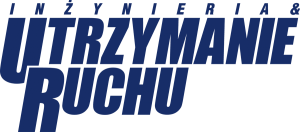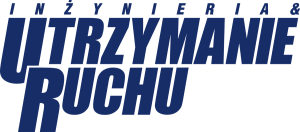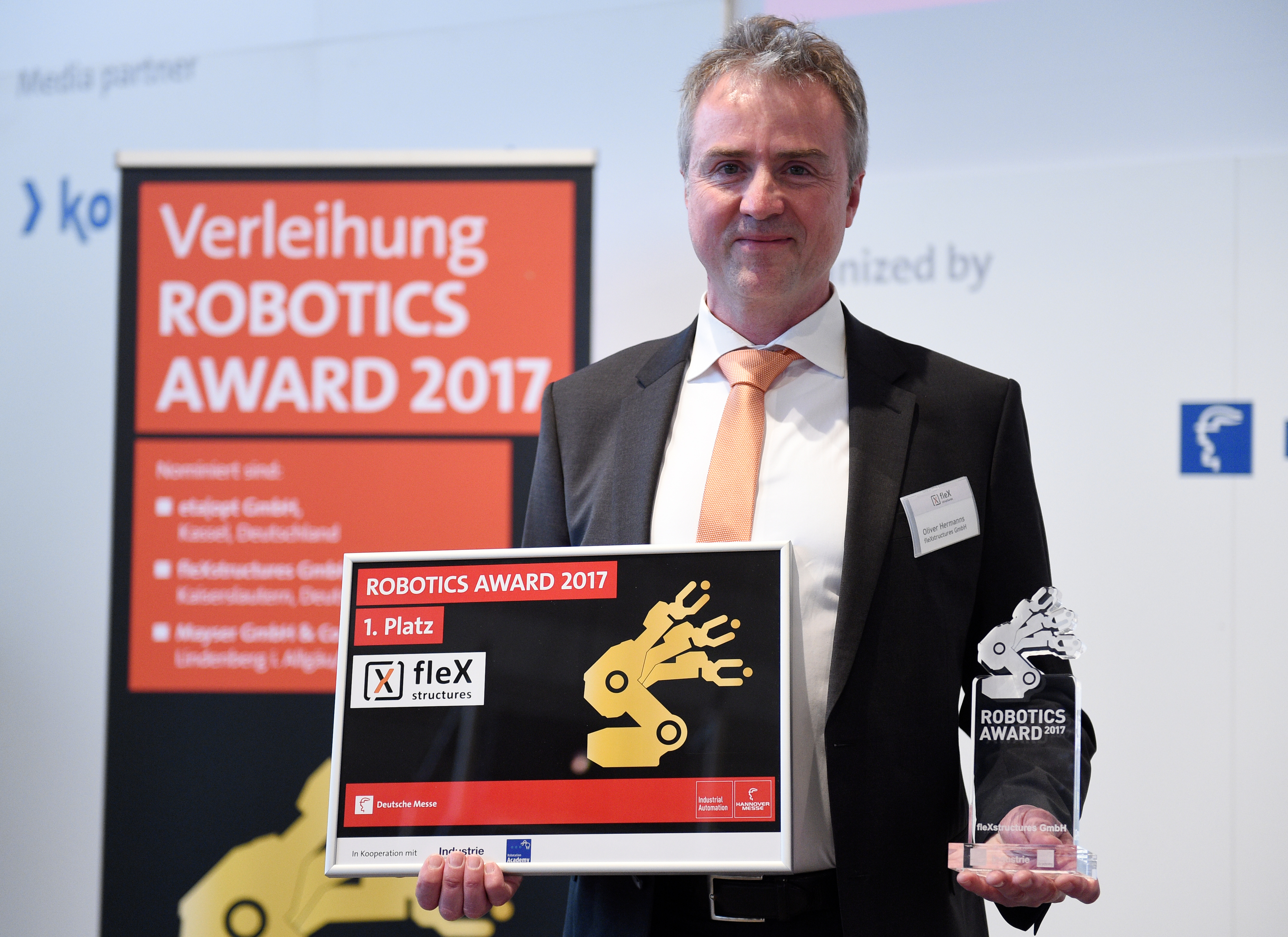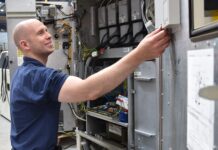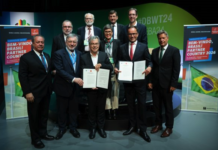The jury’s verdict is in: fleXstructures GmbH (Kaiserlautern, Germany) is the winner of the ROBOTICS AWARD 2017 and has received its prize with all due honors. The winning firm – a notably young enterprise – impressed the jury with a smart software solution. On the occasion of HANNOVER MESSE (the world’s leading trade fair for industrial technology), the highly coveted ROBOTICS AWARD for applied robotics was ceremoniously presented to fleXstructures by Daniela Behrens, State Secretary at the Lower Saxony Ministry of Economic Affairs, Employment and Transport, on behalf of Minister Olaf Lies as the award’s official patron.
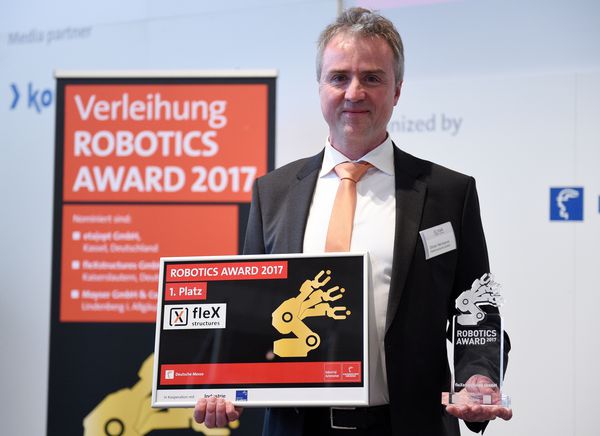
The winner of the ROBOTICS AWARD 2017 – a joint prize by the organizers of HANNOVER MESSE and the Konradin-Verlag publishing house – is fleXstructures GmbH, a company founded in 2011, i.e. a year after the first ROBOTICS AWARD was given. At the official ceremony held on the Tuesday of HANNOVER MESSE, fleXstructures CEO Oliver Hermanns was delighted to receive the prize in honor of its IPS ROBOT OPTIMIZATION software solution. Second place was taken by Mayser GmbH & Co. KG (Lindenberg, Germany) with eta|opt GmbH (Kassel, Germany) coming in at third place.
The expert jury is annually faced with the challenge of choosing the top innovation from an array of advanced solutions for applications in robot-assisted industrial automation or mobile robots and autonomous systems. One important prerequisite is that the solutions submitted may not yet have been presented to the public, or else they need to represent a significant enhancement over existing solutions. Furthermore, they must be market-ready or already deployed in real-world industrial trials. Other criteria applied by the jury are economic and technological potential as well as industrial and social benefit.
The winning entry is the IPS ROBOT OPTIMIZATION software solution submitted by fleXstructures GmbH – an entry which illustrates the vast potential of advanced simulation technology for industrial use. This solution is targeted primarily at helping automotive manufacturers to gain a competitive edge by programming and commissioning their robot cells faster and more flexibly. By simulating millions of potential robot path combinations, IPS ROBOT OPTIMIZATION coordinates movement paths and sequences across multiple robots so as to maximize efficiency and avoid collisions. The simulations also optimize movement paths to ensure maximum service life for the flexible hoses and lines attached to the robots.
Second place went to Mayser GmbH & Co. KG for its ultrasonic machine safety sensor system designed to safeguard personnel in collaborative human/robot environments. The product has been tested and certified for personnel safety applications in machine environments. The ultrasonic sensors generate an elliptical ultrasonic field which can accurately gauge distances of up to 200 cm and issue warnings by detecting persons or objects at distances of up to
250 cm. The product can thus be used for cobot tool and workpiece safety, and for protecting people from sharp or rotating objects.
Third place went to eta|opt GmbH for its vacuum generator for industrial robotic handling applications. The device doesn’t require any compressed air system, and instead uses a bellows vacuum pump. A piston driven by an electromechanical linear actuator compresses and releases a bellows which is connected to a hose. The other end of the hose can be connected to any standard vacuum gripper attachment. When the bellows is released, it generates a vacuum inside the hose and all the way down to the gripper.
Source: Deutche Messe AG
